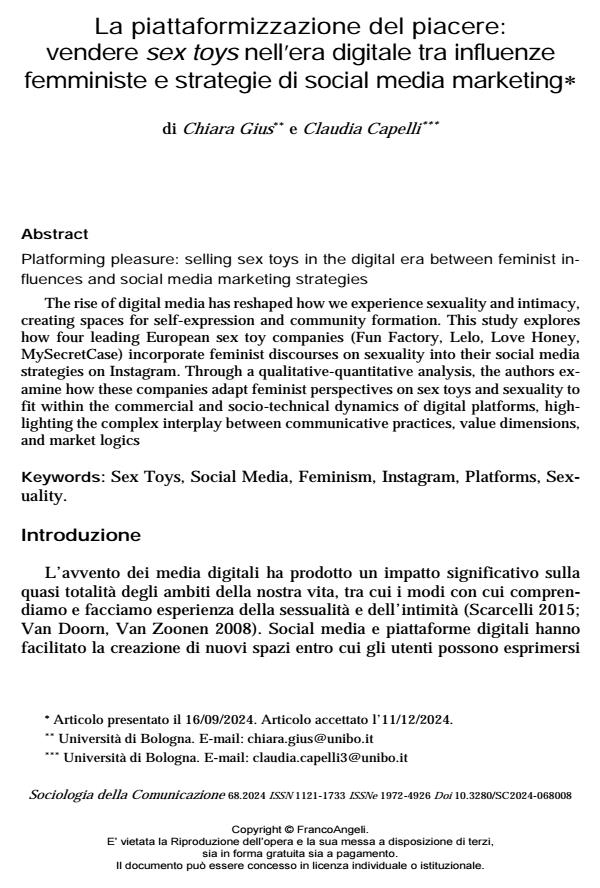Platforming pleasure: selling sex toys in the digital era between feminist influences and social media marketing strategies
Journal title SOCIOLOGIA DELLA COMUNICAZIONE
Author/s Chiara Gius, Claudia Capelli
Publishing Year 2025 Issue 2024/68
Language Italian Pages 17 P. 102-118 File size 206 KB
DOI 10.3280/SC2024-068008
DOI is like a bar code for intellectual property: to have more infomation
click here
Below, you can see the article first page
If you want to buy this article in PDF format, you can do it, following the instructions to buy download credits

FrancoAngeli is member of Publishers International Linking Association, Inc (PILA), a not-for-profit association which run the CrossRef service enabling links to and from online scholarly content.
The rise of digital media has reshaped how we experience sexuality and intimacy, creating spaces for self-expression and community formation. This study explores how four leading European sex toy companies (Fun Factory, Lelo, Love Honey, MySecretCase) incorporate feminist discourses on sexuality into their social media strategies on Instagram. Through a qualitative-quantitative analysis, the authors examine how these companies adapt feminist perspectives on sex toys and sexuality to fit within the commercial and socio-technical dynamics of digital platforms, highlighting the complex interplay between communicative practices, value dimensions, and market logics
Keywords: Sex Toys, Social Media, Feminism, Instagram, Platforms, Sexuality.
Chiara Gius, Claudia Capelli, La piattaformizzazione del piacere: vendere sex toys nell’era digitale tra influenze femministe e strategie di social media marketing in "SOCIOLOGIA DELLA COMUNICAZIONE " 68/2024, pp 102-118, DOI: 10.3280/SC2024-068008